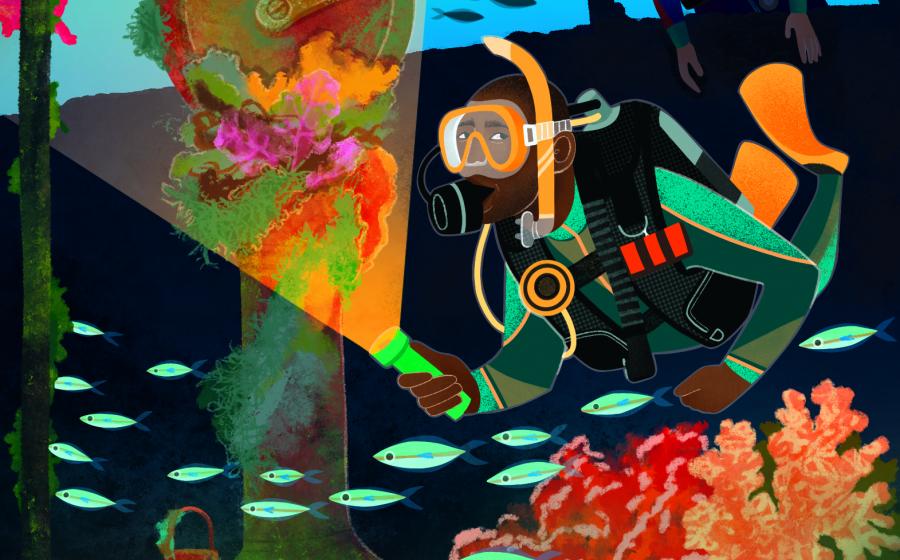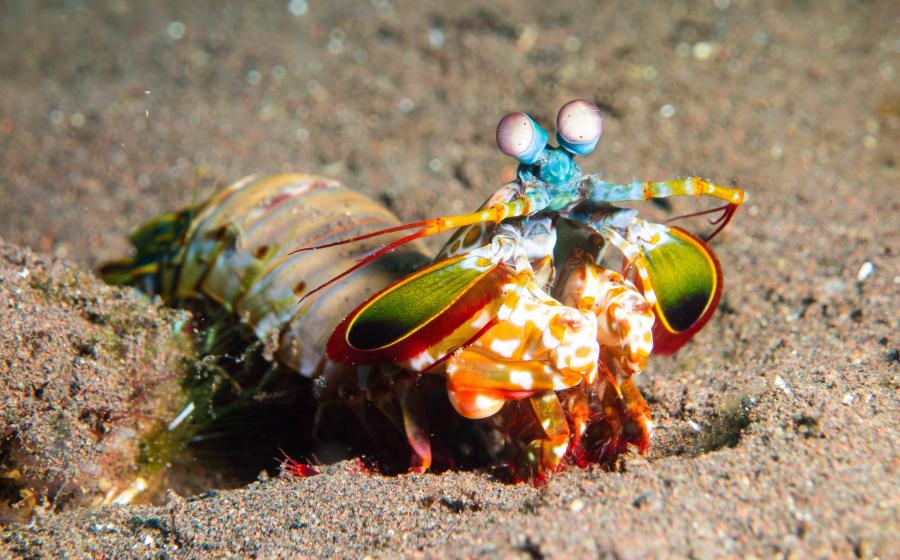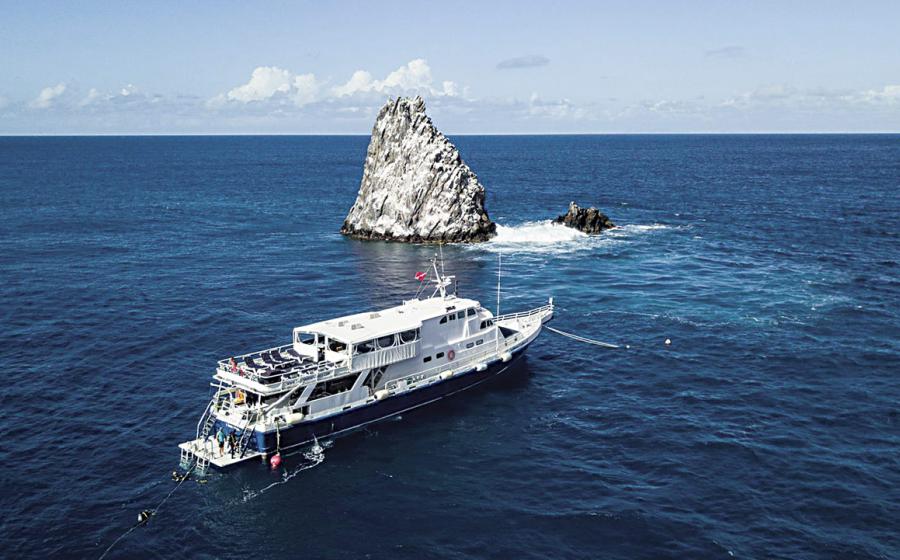How to Shoot Underwater with Remote Strobes

Alex MustardCAMERA Nikon D4, Subal housing // LENS Sigma 15mm fisheye // STROBES Seacam 150 on camera, Subtronic Alpha remote // SETTINGS f/14, 1/20 sec, ISO 800 // LOCATION Kittiwake, Grand Cayman
Shots look most dramatic when there is no sign of foreground light. The strobe on the camera is firing — on very low power — while the exposure is set for the high-power remote strobe. The key to effective remote-strobe images is for the source of light to be hidden from view. Once it’s hidden it’s hard to trigger a strobe with only its built-in slave sensor, so use a sensor on the end of a cable.

Alex MustardCAMERA Nikon D4, Subal housing // LENS Nikon 16mm fisheye // STROBES Subtronic Alpha on camera, Subtronic Alpha remote// SETTINGS f/9, 1/40 sec, ISO 400 // LOCATION SS Thistlegorm, Egypt
A ruined motocycle lies encrusted with coral in the hold of the SS Thistlegorm.

Alex MustardCAMERA Nikon D4, Subal housing // LENS Sigma 15mm fisheye // STROBES Inon Z240 on camera, Nikonos SB104 off camera // SETTINGS f/11, 1/100 sec, ISO 400 // LOCATION Ghost Cave, Sardinia, Italy
Photographer and marine biologist Alex Mustard explores Ghost Cave in Sardinia, Italy.

Courtesy IkeliteThis converter is capable of triggering Ikelite DS-series strobes off any camera or strobe and provides 90 degrees field of view.
MSRP: $125
CONTACT: ikelite.com
For underwater photos, this essential piece of equipment works both on and off the camera.
As standards for what comprises ideal underwater photography continue their inexorable rise, shooters are drawn to more-challenging techniques to make their images stand out. Jump in unprepared, and a remote strobe can be frustrating, but if you’re armed with the right kit and correct preparation, it should hold no fear.
Remote strobe lighting is not a new technique; the art has been perfected for years by leading cave photographers such as Jill Heinerth and the late Wes Skiles. Recently this technique has become popular on recreational dives as well.
Start with a minimum of two strobes: one attached to the camera to act as a trigger, and one off-camera. A wide-beam remote strobe is your best choice because it can get much closer to the subject than usual and doesn’t have as much space to spread. When it comes to aiming the strobe, try mounting it on a plastic Gorillapod, usually with a small piece of diving lead to keep it in place, or ask your buddy for assistance.
Set Up the Scene
Reefs are bright, and there is often too much coral cover to be able to put a strobe down. Remote-strobe photography is a great option for atmospheric dive sites such as caverns and the inside of wrecks. Off-camera strobes can be used subtly or dramatically, to either back-light a subject or to illuminate it from the front. Within a dark frame, they can be the only source creating a silhouette or lighting a subject.
While the effect can be stunning, using remote strobes takes extra work and planning. The initial strobe setup and swimming back and forth to make small adjustments can also eat up your bottom time. In a cavern or a wreck, note that too much movement can stir up sediment and ruin the shot, so be careful where you fin. Your best bet is to work with another diver or photographer who can assist you by using predetermined hand signals for aiming the strobe and adjusting the power. They can also act as a part-time model.
Double Diver
Remote strobes are commonly used to highlight a subject in a dark environment. Photographing divers inside wrecks or caverns is challenging because divers are usually in black wetsuits and gear in places where the surrounding environments are also black. To avoid getting a floating face in a sea of black, the best solution is to use a buddy team, with one diver playing the part of the model and a second diver holding the strobe with the aiming light turned on. By positioning the model in the middle and having the second diver aim the strobe at the photographer, the subject is lit and the strobe is blocked from view, which creates a pleasing backlighting effect, making the model stand out from the background. This is the technique I used in the split-level image above.
Light Choices
You can use any strobe for off-camera lighting, but having a reliable external slave sensor is a key to success. First, test the remote strobe out of the water and practice the technique on land. Remember — problems are much harder to fix underwater.










